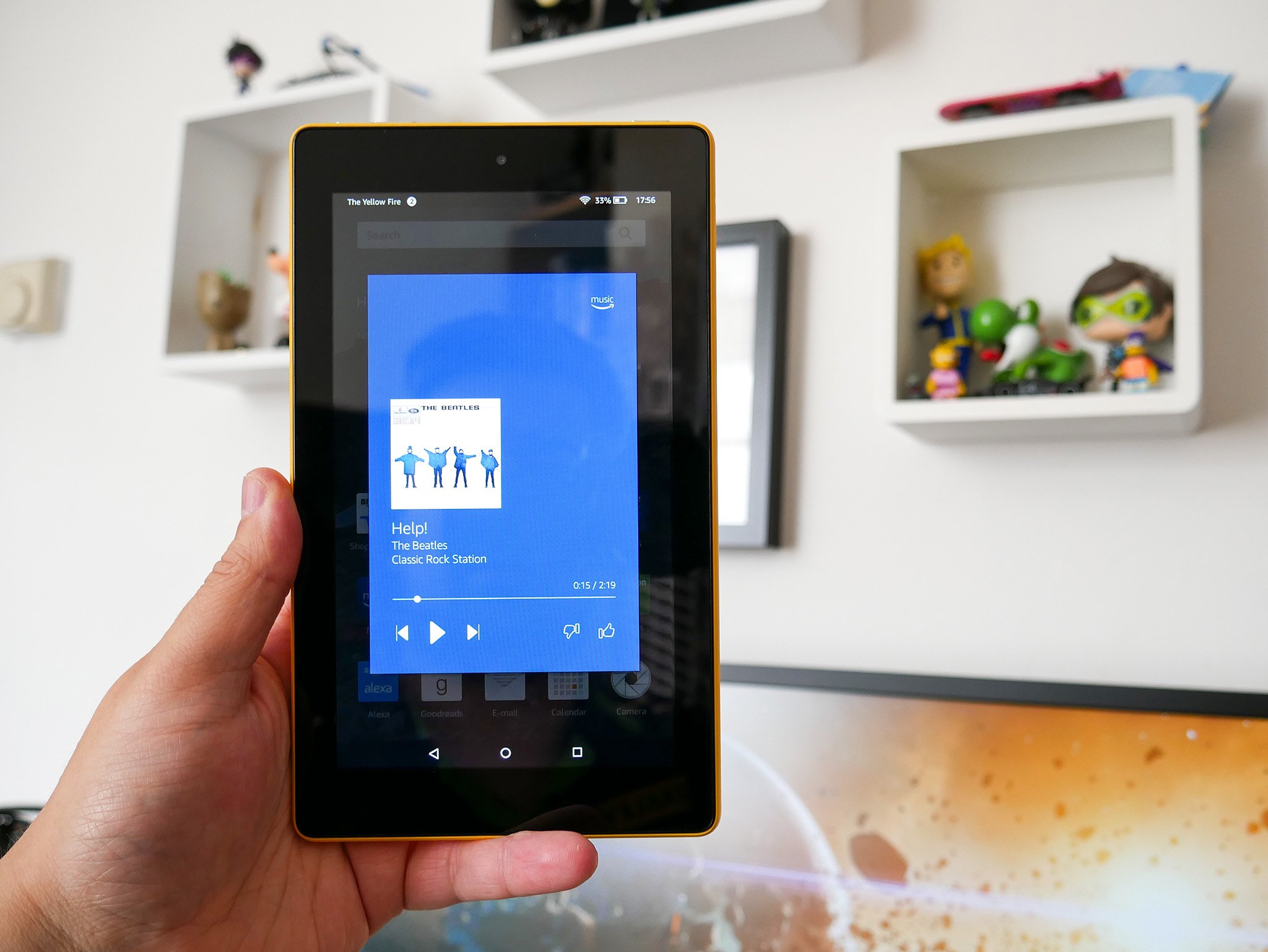You wouldn't have the Amazon Echo (or Echo Dot, or Echo Show, or whatever) without Amazon Alexa. Here's what you need to know about the two.
Latest News
April 4, 2018 – Hands-free Alexa comes to more Fire tablets, music now available with Routines, and Canadian users can use Alexa in the Amazon Music mobile app
Whew, what a day! Amazon announced a heap of Alexa goodies on April 4, and without further ado, let's run through what's new.
First off, the online shopping giant has now allowed you to turn the Fire 7 and Fire HD 8 tablets into hands-free Alexa speakers. This is a feature that was previously reserved for just the Fire HD 10, and it allows you to say "Alexa" and have the tablets respond just like an Echo. The tablets will need to have their screens on or be plugged into a power source in order for this to work, but even so, it's a nice way to get Alexa listening to you no matter where you go.
Moving over to Alexa Routines, you can now add music to these. Alexa Routines enable you to perform a variety of actions with one single command, and up until now, playing music wasn't an option when creating a new Routine. With this update, however, you can play your favorite album, artist, podcast, etc. from Amazon Music, Spotify, Deezer, Pandora, and TuneIn.
Last but not least, users in Canada can now talk to Alexa inside the Amazon Music app for Android and iOS.
What is Alexa?
Amazon Echo. Or Alexa. They're one and the same, really. That is, an Amazon Echo without Alexa really isn't any more than just a speaker. And Alexa without a speaker is just ... Well, nothing.
Confused yet. I don't blame you. Let's explain the difference this way:
Echo is hardware, Alexa is software
Amazon Echo — and all of its permutations — is hardware. Alexa is software. She (and I have zero problem if you refer to Alexa as a she) is the brains behind the Echo, and all the things you can do with it. And because she's software, she's available on more than just Amazon's own devices.
Anyone can put Alexa on anything. You can make your own Alexa speaker for just a few bucks and a little bit of nerdy know-how. There are third-party Alexa speakers that look like Amazon's own Echo Dot. There are third-party Alexa speakers that look like speakers. You can get Alexa baked into a smart thermostat. She's built into the HTC U11 smartphone.
The point is, Alexa can be built into pretty much anything these days.
But that's just half of the story.
It's all about the Alexa Skills, baby ...
Alexa starts out by knowing what Amazon tells it. She already knows how to tell the time, and set alarms and timers, or answer general questions and read headlines. But Alexa also has the ability to learn more. A lot more.
Or, more precisely, you have the ability to teach Alexa new things.
See all of Amazon's Skills here
Amazon calls these things "Skills," and there are hundreds of them.
Want to teach Alexa to turn on your smart lights, or open your garage door, or do anything she doesn't already know how to do? You need a Skill. That's where developers come in. Amazon has made it so that anyone can write an Alexa Skill, and companies and their developers have been doing so for years now.
Think about the things you do every day. Listen to satellite radio? There's a Skill for that. Lock your house after you're already at work? It's a little daunting, actually. There are hundreds and hundreds of Skills, of varying degrees of usefulness. (Dog facts, uh, OK.)
How to enable and disable Alexa Skills
Alexa calling and messaging
All of that connected home stuff is great, and it's important. But one of the more exciting avenues of potential lies in Alex Calling and Messaging. As the name implies, it's the ability to make calls and leave messages through Alexa. From the outset it works with Echo devices and the Alexa app on phones and tablets. If you have an original Echo or Echo Dot, you can make voice calls. If you have an Echo Show, you can make video calls, or even "drop in" on a close acquaintance (they have to approve you first) without them having to hit a single button.
That's where these $50 Echo Dots really make a lot of sense. Now Amazon has a means for you to communicate not just on that little Dot, but also on your phone. It's two birds with one stone, and it's really just the start of things. And it makes up for where Amazon failed in trying to make its own phone. Folks didn't want a Fire Phone, but they do want an Echo — especially an inexpensive on — and in buying one they have to put the Alexa app on their phone.
It's not quite a benevolent Trojan Horse, but it's close.
Read: Amazon is getting close to being the king of all messaging

0 Response to "You Can See More: Amazon Alexa: Everything you need to know about the heart of the Echo"
Post a Comment